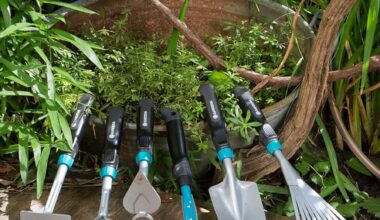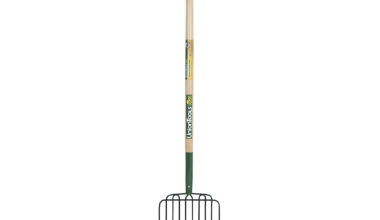Have you ever thought about why weeds should be removed from a field? Weeds can harm your crops’ health, growth, and your yield. We’ll explore why it is important to remove weeds, look into why removing weeds is key and how to keep your crops weed-free.
Weeds are plants that you don’t want in your field. They compete with your crops for water, nutrients, space, and light. If you don’t control them, they can take over your field. This steals the things your crops need to grow well.
This competition can make your crops grow slowly, reduce the amount you harvest, or even stop you from harvesting anything at all. It can hurt your farm’s productivity and earnings.
Why Weeds Should be Removed from a Field
Weed removal is key to your field’s success. These unwanted plants can greatly affect your crop yield. They take over the resources your crops need, like water, nutrients, space, and light. This can stop your crops from growing and developing well.
Keeping your field weed-free is key for your crops’ health and success. Weeds can harm your crops’ growth, yield, and productivity. Here are reasons why removing weeds is important
Competition for Resources
Weeds are great competitors, taking all the resources your crops desperately need. They have a remarkable ability to rapidly extract water from the soil, often outcompeting crops with their extensive root systems. This deprives your plants of essential moisture, hindering growth and development.
Sunlight is another critical resource that weeds aggressively compete for. Their ability to grow rapidly and cast a shadow over your crops can significantly reduce photosynthesis, the process plants use to convert sunlight into energy.
Similarly, weeds are voracious consumers of vital nutrients like nitrogen, phosphorus, and potassium. By hogging these nutrients, they starve your crops, leading to stunted growth, reduced yield, and lower crop quality.
Pest and Disease Harboring
Weeds create a perfect breeding ground for pests and diseases that can harm your crops. Many weed species provide shelter and food for insects, mites, and other harmful organisms. Aphids, for example, often find refuge on weeds before migrating to your valuable crops.
Furthermore, certain weeds can harbor fungal diseases and other pathogens. These diseases can then be transmitted to your crops, leading to reduced yields, crop loss, and increased production costs. By removing weeds, you not only deprive pests and diseases of a hospitable environment but also create a healthier growing environment for your crops.
Interference with Management
Weeds are known for hindering efficient farm management practices. Their presence can significantly complicate planting operations, as they create uneven terrain and interfere with seed-to-soil contact. This can result in poor germination and uneven crop stands, impacting overall yield.
Harvesting becomes a challenging task when fields are infested with weeds. Tall, dense weed growth can clog harvesting equipment, reducing efficiency and increasing repair costs. The presence of weeds can contaminate harvested crops, leading to quality issues and potential market rejection.
The application of pesticides and fertilizers is also hampered by weed interference. Weeds can create a physical barrier, preventing even coverage and reducing the effectiveness of these inputs.
Impact of Weeds on Crop Yield
Weeds can greatly affect how much a crop produces. They take water, nutrients, and light away from the main plants. This makes the crops grow poorly, leading to less food and lower quality.
Studies show that weeds can cause big losses in many crops. New herbicides from the last decade can kill big weeds, giving farmers more options. But, the time when weeds and crops compete can change a lot, based on how close the plants are together.
A study at the University of Nebraska found that soybeans in close rows (7.5″) faced weed competition later than those in wider rows. This was at the V3 stage. For soybeans in 15″ and 30″ rows, competition started earlier, at the V2 and V1 stages. Also, Roundup Ready corn lost about 15% of its yield when herbicides were applied too late.
Weeds can grow fast and get tall, making it important to apply herbicides early. Waiting too long to spray can let weeds grow too much. But, if crops grow well, they can kill weeds like waterhemp by up to 80% if they start growing at the right time.
Weeds have a big effect on how much crops produce. Things like how many weeds there are, when they start growing, and how they compete for resources matter a lot. Farmers need good ways to control weeds to keep their farms profitable.
Weed Control Methods
Farmers have many ways to control weeds in their fields. They can use manual removal or apply herbicides. Each method has its own benefits and things to consider for managing weeds well.
Manual Removal
Removing weeds by hand, like pulling or hoeing, works well for small farms or specific weed areas. It lets farmers target weeds without harming crops. But, it can be hard work and slow, especially in big fields or with many weeds.
Herbicide Application
Using herbicides can be a fast and thorough way to control weeds. These chemicals kill certain weeds, letting crops grow better. It’s great for big weed problems or tough weeds. Yet, using herbicides should be part of a bigger plan to manage pests, called integrated pest management (IPM).
Manual removal and herbicides both have good and bad sides. Farmers need to think about what they need, their land, and their goals for the future. This helps them pick the best weed control methods for their farms.
Sustainable Farming Practices
Farmers can use sustainable farming to control weeds instead of traditional methods. One good way is Integrated Pest Management (IPM). It’s a strategy that uses many techniques to cut down on chemical herbicides.
IPM helps make a balanced ecosystem. It keeps weeds from harming crops and protects the environment. This method includes crop rotation, cover cropping, and using living organisms to control pests.
Integrated Pest Management (IPM)
Using IPM, farmers can control weeds for the long term. It makes farming more sustainable. This way, farmers don’t need to use harmful chemicals as much. It helps the farm’s ecosystem stay healthy and strong.
- Less use of chemical herbicides
- Better soil health and fertility
- More biodiversity and natural pest control
- Stronger resistance to environmental challenges
- Long-term success of farming
By choosing sustainable farming, farmers can fight weeds and keep their farms healthy and strong.
Soil Nutrient Competition
Weeds compete with crops for water, light, and soil nutrients. They quickly take nutrients like nitrogen, phosphorus, and potassium from the soil. This leaves crops with less to grow and can make them grow poorly, produce less, and be less productive.
Most of a plant’s mass comes from the air, but a small part is from soil nutrients. After cutting down weeds, most of the underground part breaks down and adds nutrients to the soil. Soil microbes help break down plant material and make nutrients available to plants.
Removing weeds lets crops get the nutrients they need to grow well and fully. Studies show that keeping fields weed-free all season can lead to higher crop yields. Using a pre-emergent herbicide at planting helps crops compete better with weeds and boosts yields.
Managing soil nutrient competition, weed impact on soil, and crop nutrient depletion helps farmers get the most from their crops. It also keeps their fields healthy and productive over time.
Conclusion
Removing weeds from a field is key for keeping crops healthy and boosting yields. Weeds take resources like water, nutrients, and light away from crops. This can lower the crop’s productivity and yield.
Using methods like manual removal and herbicides wisely helps. Sustainable farming practices, like integrated pest management, also play a big role. These methods make sure crops get what they need to grow well.
Controlling weeds early on helps not just the current crop but also the soil and future farming. Weed removal is crucial for better crop yields and farm profits. Sustainable farming methods reduce harm to the environment and human health.
Keeping fields weed-free is vital for growing crops successfully and for the long-term health of your farm. Knowing how weeds compete with crops and using a good weed control plan can increase yields. It also cuts down on costs and helps the environment.






